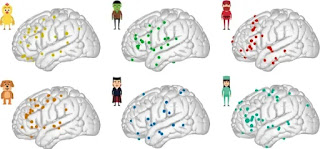Thank You for making me so wonderfully complex!
Psalm 139:14 NLT
"In a recent paper published in Nature Communications Psychology, a research team at NYU, led by Associate Professor Adeen Flinker and Postdoctoral Researcher Adam Morgan, explored how the brain constructs sentences from individual words.
The study revealed that although the brain’s activity patterns for individual words stay consistent across different language tasks, the way those words are arranged and processed depends heavily on sentence structure. In sensorimotor areas, neural activity mirrored the order in which the words were spoken.
However, in prefrontal regions—especially the inferior and middle frontal gyri—the encoding strategy was different. These areas not only represented the words participants intended to say but also registered each word’s grammatical function (such as subject or object) and its place within the sentence’s overall structure.
The researchers also found that during passive constructions like“Frankenstein was hit by Dracula,” the prefrontal cortex maintained activation for both nouns throughout the entire sentence.
Even while one word was being spoken, the other remained active in the brain. This ongoing, simultaneous encoding indicates that forming grammatically complex or non-standard sentences requires the brain to retain and manage multiple elements at once, likely engaging additional working memory to do so.
Interestingly, this dynamic aligns with a longstanding observation in linguistics: most of the world’s languages favor placing subjects before objects. The researchers propose that this could be due, in part, to neural efficiency.
Ultimately, this work offers a detailed glimpse into the cortical choreography of sentence production and challenges some of the long-standing assumptions about how speech unfolds in the brain. Rather than a simple linear process, it appears that speaking involves a flexible interplay between stable word representations and syntactically driven dynamics, shaped by the demands of grammatical structure."
Interestingly, this dynamic aligns with a longstanding observation in linguistics: most of the world’s languages favor placing subjects before objects. The researchers propose that this could be due, in part, to neural efficiency.
Ultimately, this work offers a detailed glimpse into the cortical choreography of sentence production and challenges some of the long-standing assumptions about how speech unfolds in the brain. Rather than a simple linear process, it appears that speaking involves a flexible interplay between stable word representations and syntactically driven dynamics, shaped by the demands of grammatical structure."
SciTechDaily

